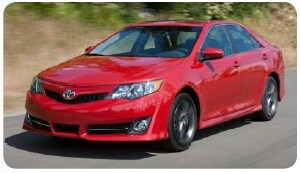Great news for those looking to purchase a 2012 Camry!
The Toyota Camry has been America's best-selling car 13 of the last 14 years, including the last nine years running. To thank its loyal owners for this remarkable achievement, Toyota is now offering for a limited time only a special perk to customers who purchase or lease the all new 2012 Camry: 5 years of 24-hour roadside assistance.

This offer builds on the two years of roadside assistance that comes standard on all eligible new Toyota vehicles as part of the Toyota Care complimentary maintenance plan. As such, the benefits of the coverage are the same including:
- Battery jump starts - A service provider will assist with vehicle jump starts as necessary.
- Tire service - A service provider will come to the vehicle location and replace the tire with the customer's inflated spare.
- Lockout protection - A service provider will come to the vehicle location to unlock doors or assist if the key is lost or broken.
- Towing - A service provider will tow the vehicle to the closest Toyota dealership (or to the closest Toyota dealership of the customer's choice if it is within 25 miles of the vehicle's location.)
These services will be provided for five years from the date of purchase, but only on 2012 Camrys delivered by January 3, 2012. Also, this offer does not apply to 2012 Camrys that are part of a rental or
commercial fleet, or a livery or taxi vehicle. Customers who purchase a 2012 Camry while this promotion is applicable will receive a special version of the Toyota Care Welcome Kit that spells out the details
of this additional coverage. The re-invented 2012 Camry offers a sophisticated new design with a new level of interior refinement, roominess and comfort. In addition to our standard QDR, the 7th-generation Camry features class-leading safety features, driving dynamics, fuel economy and multi-media technology. Now, and for a limited time only, it can boast of one more advantage: further bolstering Toyota customers' peace of mind five years down the road!
Read more: http://www.toyota.com/camry/features.html












